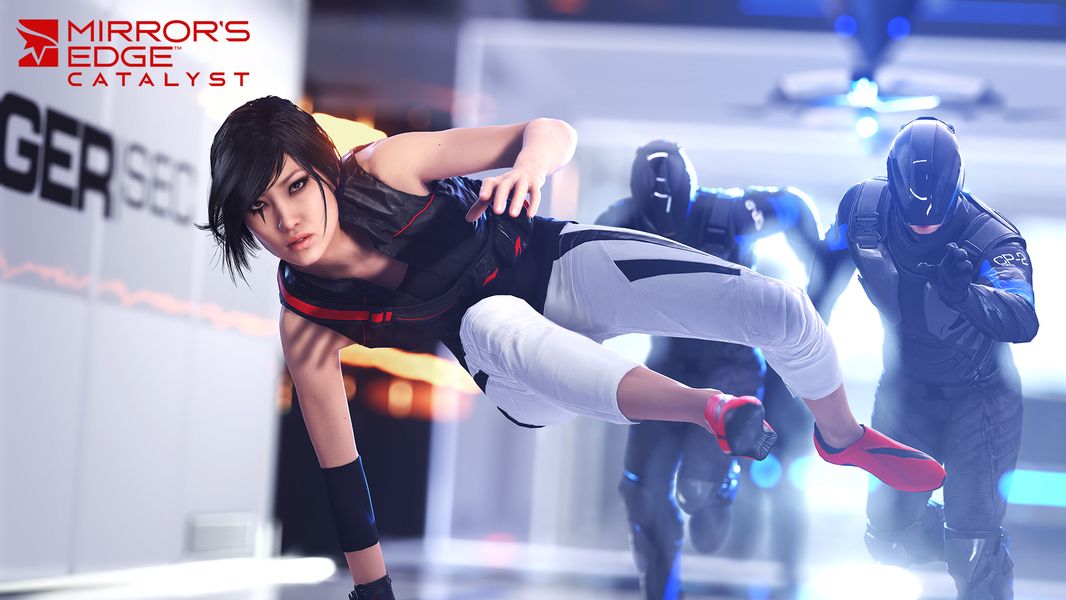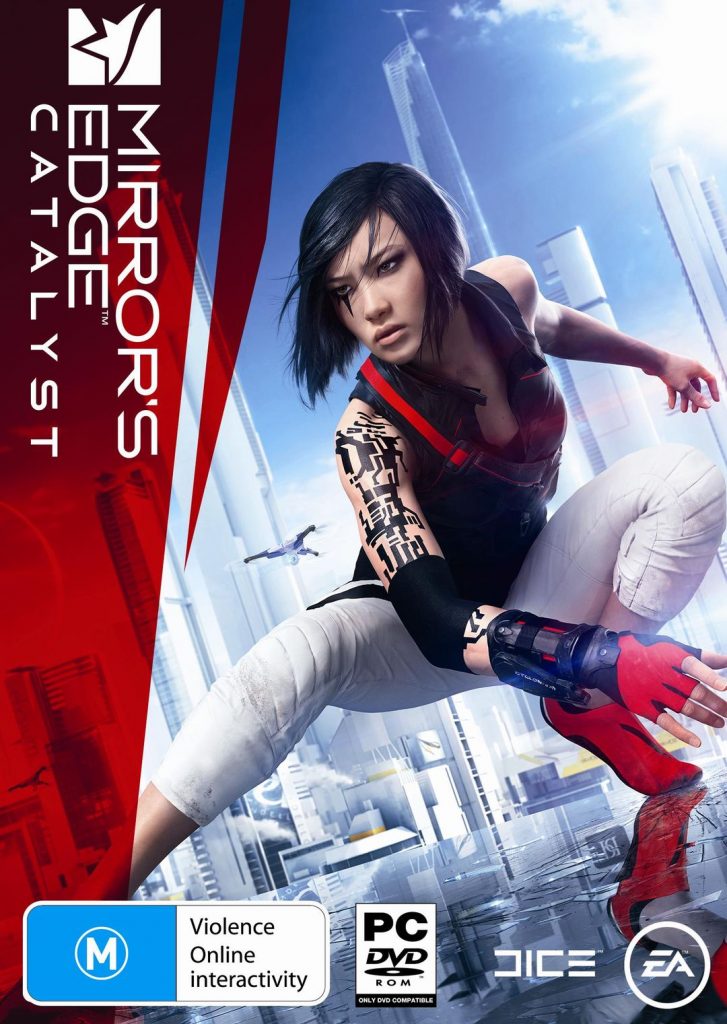
Mirror’s Edge: Catalyst
Developer: DICE
Publisher: EA
Platform: PlayStation 4, Xbox One, Windows (Reviewed)
Release Date: 9 June, 2016
Price: $59.99 USD – Available Here $89.95 AUD (PC)/$99.95 AUD (Consoles) – Available Here
Video Review
Overview
Mirror’s Edge: Catalyst marks the return of the parkour IP after eight years of dormancy. The game sits somewhere between prequel and reboot for franchise, focusing purely on Faith Connor as a character versus the original Mirror’s Edge as a story. Mirror’s Edge: Catalyst provides players with a mix of open world parkour and hand-to-hand combat in a futuristic dystopia.
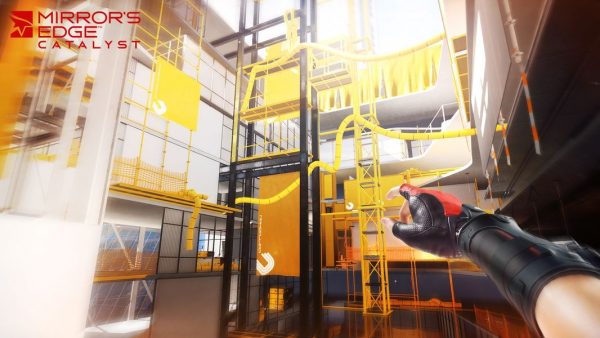
Story
The game kicks off with Faith Connors being released from juvenile detention with a debt to the crime lord Dogen hanging above her head. Instead of quietly joining the straight and narrow, Faith quickly returns to her roots by serving as a runner for Noah. One of her missions goes awry when Faith decides to go off script and steal a device containing plans for Reflection, triggering a crackdown on all runners by the ever present K-Sec security forces. As the game progresses, Faith begins to reflect upon her childhood, reliving the day her parents were killed.
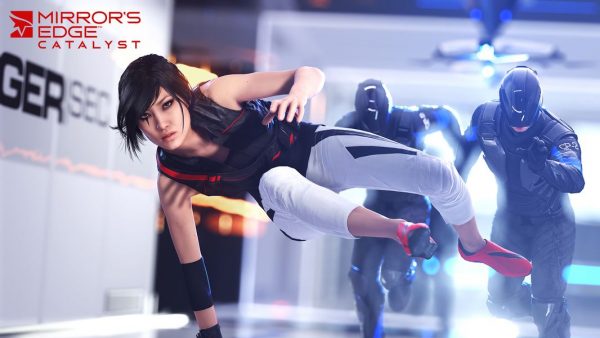
The story of Mirror’s Edge: Catalyst is a bit of a mess. Players are tossed into the midst of a world without much explanation or background on what is going on. Those new to the world of Mirror’s Edge are essentially stuck waiting until later into the game when the world is given a little more flesh. A good example of this is the plot concerning Dogen. Although players are introduced to Faith’s debt to him within the first five minutes of the game, we barely know the details of this major debt until well into the game. This sort of convoluted method of storytelling makes it really hard to become interested in the plot.

Gameplay
Mirror’s Edge: Catalyst is a first person open world parkour game. The controls are simple. At its very core, there is one button to jump and another to crouch. Based on the environmental context, Faith will vault, mantle, slide, and roll like a parkour expert. There are quick turns and bursts of speed that Faith can use to augment her movement, but the two button system still handles a majority of the movement. The system is perfect as it feels incredibly natural and won’t leave players trying to fumbling remember the right buttons for the movement they want to execute.
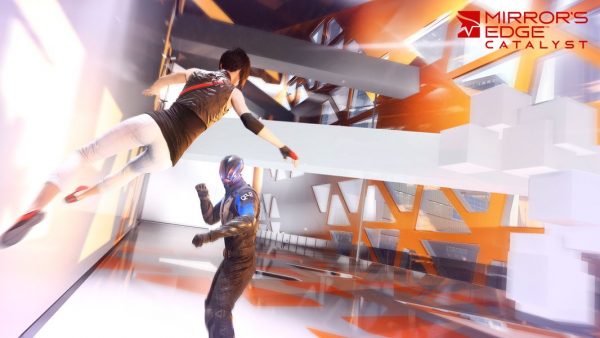
Players are given almost free reign of the rooftops in the city of Glass, a futuristic city filled with towering skyscrapers. Like most open world games, there are the standard smattering of side missions and collectibles that augment the main story missions. In addition, Mirror’s Edge: Catalyst introduces asynchronous multiplayer to the game. Players can create their own races and challenge their friends to beat their best times. The side missions are pretty dull, with most being simple get from point A to point B delivery missions. The Gridnode side missions that unlock fast travel points around the map are easily the best the game has to offer when it comes to side missions. Players are given a level where they must solve a parkour puzzle without triggering alarms. These levels are designed well and hit the right balance of challenging and entertaining.
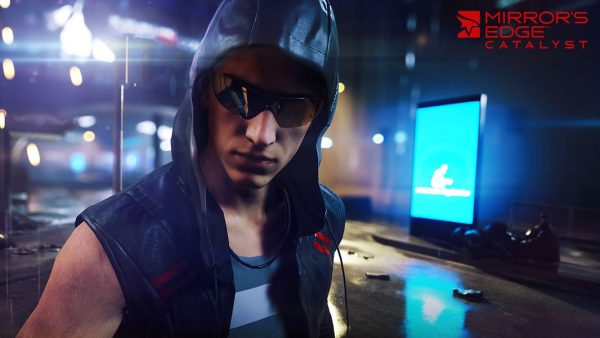
The open world map is decent for the most part. The map is split up into several districts, each being separated by short almost tunnel like sections that replaces the dreaded loading screen. Players can trigger Runner’s Vision to get a nice red line directing them to their chosen waypoint or next objective. The game stresses that these paths are only suggestions and that there may be faster ways to get from point A to point B. For the most part, I found these alternate routes were only marginally faster. Part of the problem is that there isn’t much choice for alternate routes. Usually the alternate route was an upper patio area that players could choose to take instead of the lower route suggested by the game. Traversing from building to building is almost always done at a single point and I ran into a lot of dead ends in the open world, which severely restricts options.
The level design of the closed off mission areas are really where Mirror’s Edge: Catalyst shines. The levels tend to be more focused and compact, which means there are a lot less dead ends to discover when the alternate route experiment goes awry. The smaller size means it is a lot easier to discover side areas with collectibles that need clever use of Faith’s skills to access. Trying to figure out how to access these areas are probably one of the greater joys in the game.
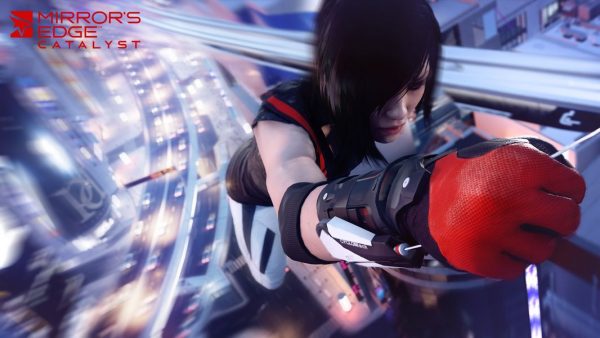
Mirror’s Edge: Catalyst really struggles in the combat. DICE chose to completely dispense with the gunplay in the new game, instead focusing on hand to hand combat. Faith has two attacks, a light and heavy attack. Combined with a quick movement button, the theory goes that Faith should have a very smooth combat style that reflects her background as a free runner. In practice, the combat is a clunky affair that doesn’t really reward well timed and properly positioned attacks and counters. Instead, combat boils down to Faith bouncing from side to side to avoid blows while spamming attacks to whittle the enemy health. The combat is really boring and uninspired. I think the game would have been much better served to remove skip the combat entirely and focus on the adrenaline pounding escapes from authority.
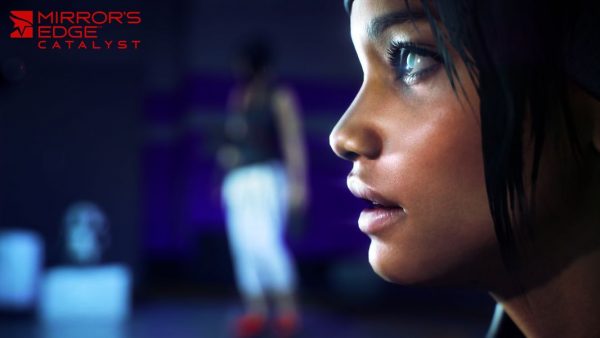
Visuals
The city of Glass is a beautiful futuristic world that stays true to the original design laid out in Mirror’s Edge. The city is built out of white and silver, with splashes of bright red and the odd yellow to signify important areas Faith should traverse. It is a visually striking design that is still appealing eight years on. The enemy design is surprisingly plain considering the high tech world; however, each one is visually distinct, which makes it pretty easy to figure out if any special consideration needs to be paid. On the PC side, there are a decent number of video options to tweak. The game really needs a graphics card with 4GBs of video RAM to look its best, though it is pretty passable at low graphics.
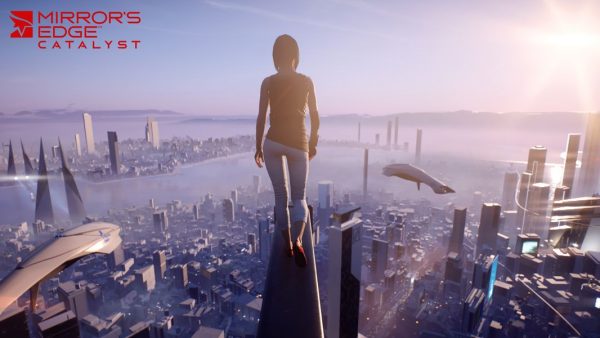
Audio
The audio in Mirror’s Edge: Catalyst is what you would expect from a triple A title for the most part. The sound effects are excellent. From the thumps of impact from Faith kicking a K-Sec officer in the back to the scraping noise of Faith sliding underneath a pipe, DICE has done an excellent job creating a realistic and enjoyable soundscape. The soundtrack is futuristic and blends in beautifully with the game. It picks up at all the right time and subtly builds tension without ever feeling intrusive or in your face. The voice acting is good for the most part. Strangely enough, the voice actress for Faith seems to be the weakest link in the cast. She delivers most of her lines well, but there are some out of place moments where she feels wooden or just hits the wrong tone.
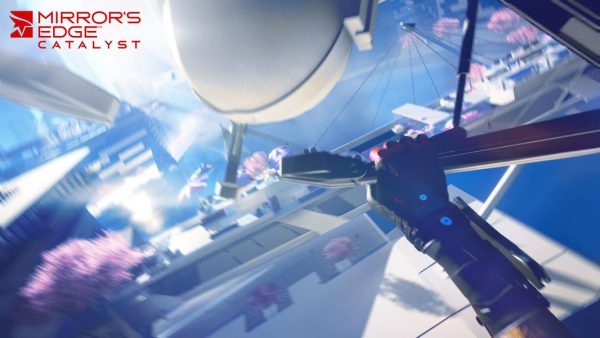
Overall
Mirror’s Edge: Catalyst is a good parkour game, but a pretty terrible fighting game. The clunky and repetitive combat takes away from the really impressive parkour elements of the game. The controls for the parkour system is brilliant in its simplicity. The open world level design is decent, but is definitely outshined by the more compact designs of the indoor areas. There are some options for alternative routes in the game, but it definitely would have benefited from more and better choices. Even with all its flaws, Mirror’s Edge: Catalyst still delivers one of the best parkour experiences video gaming has to offer.
Capsule Computers review guidelines can be found here.


